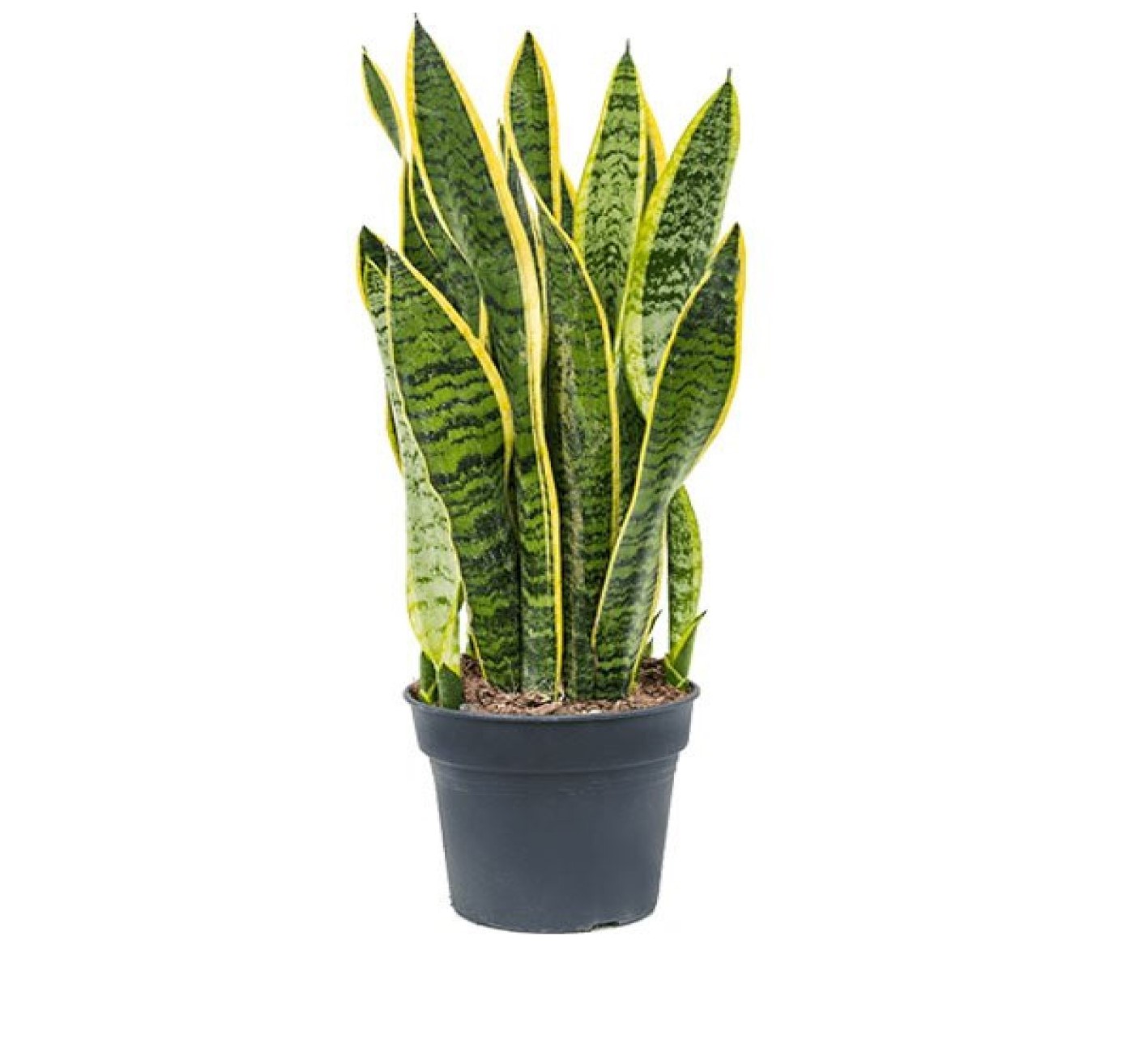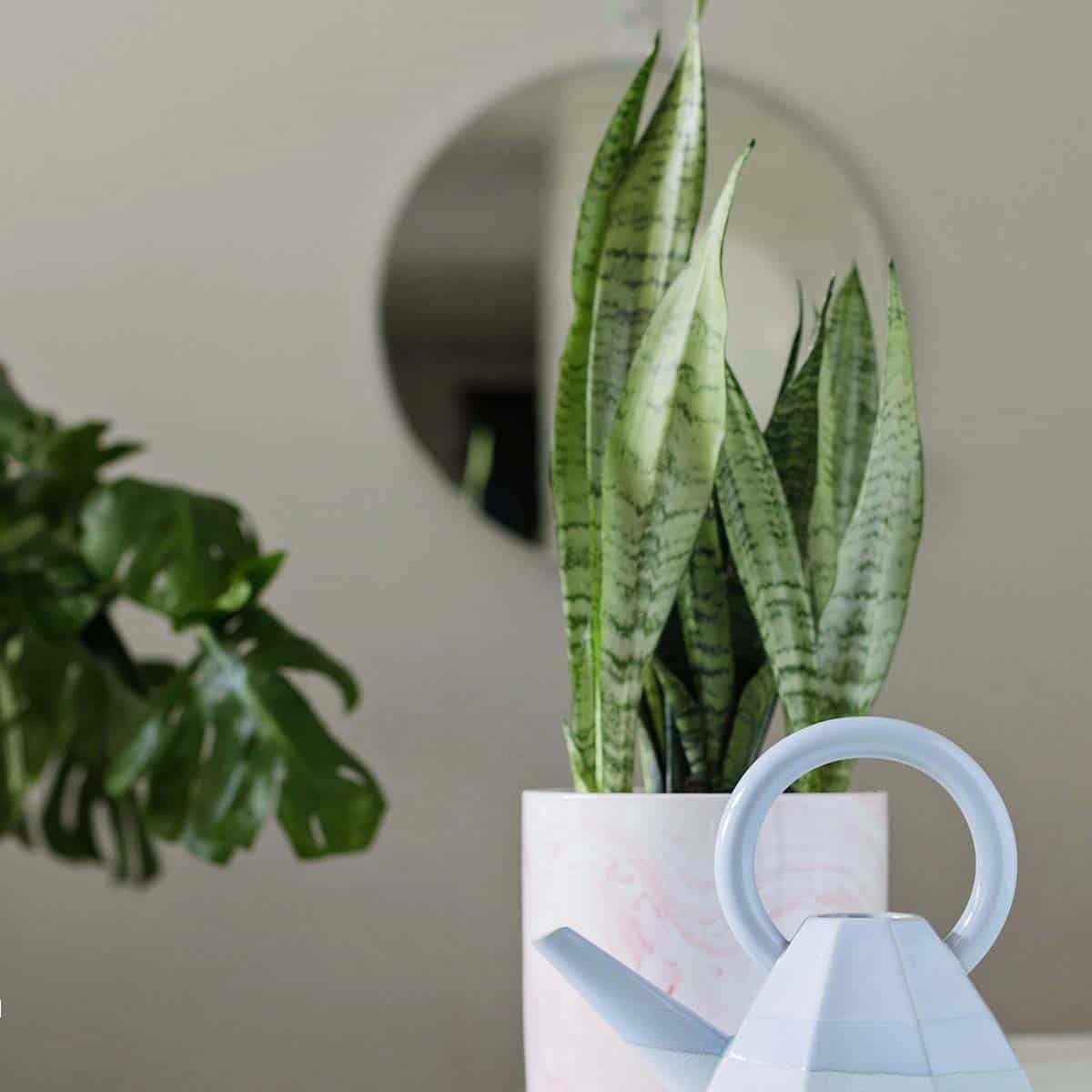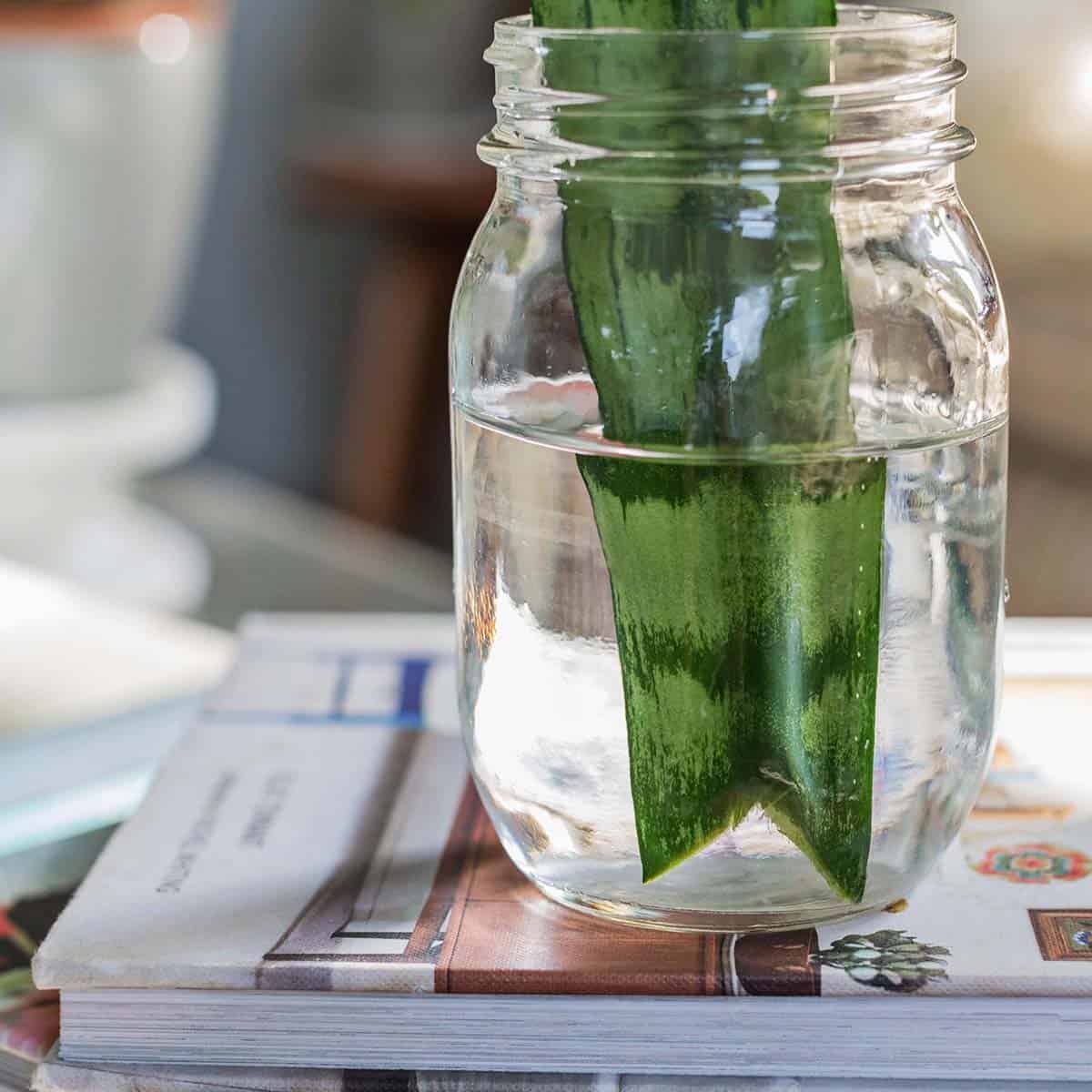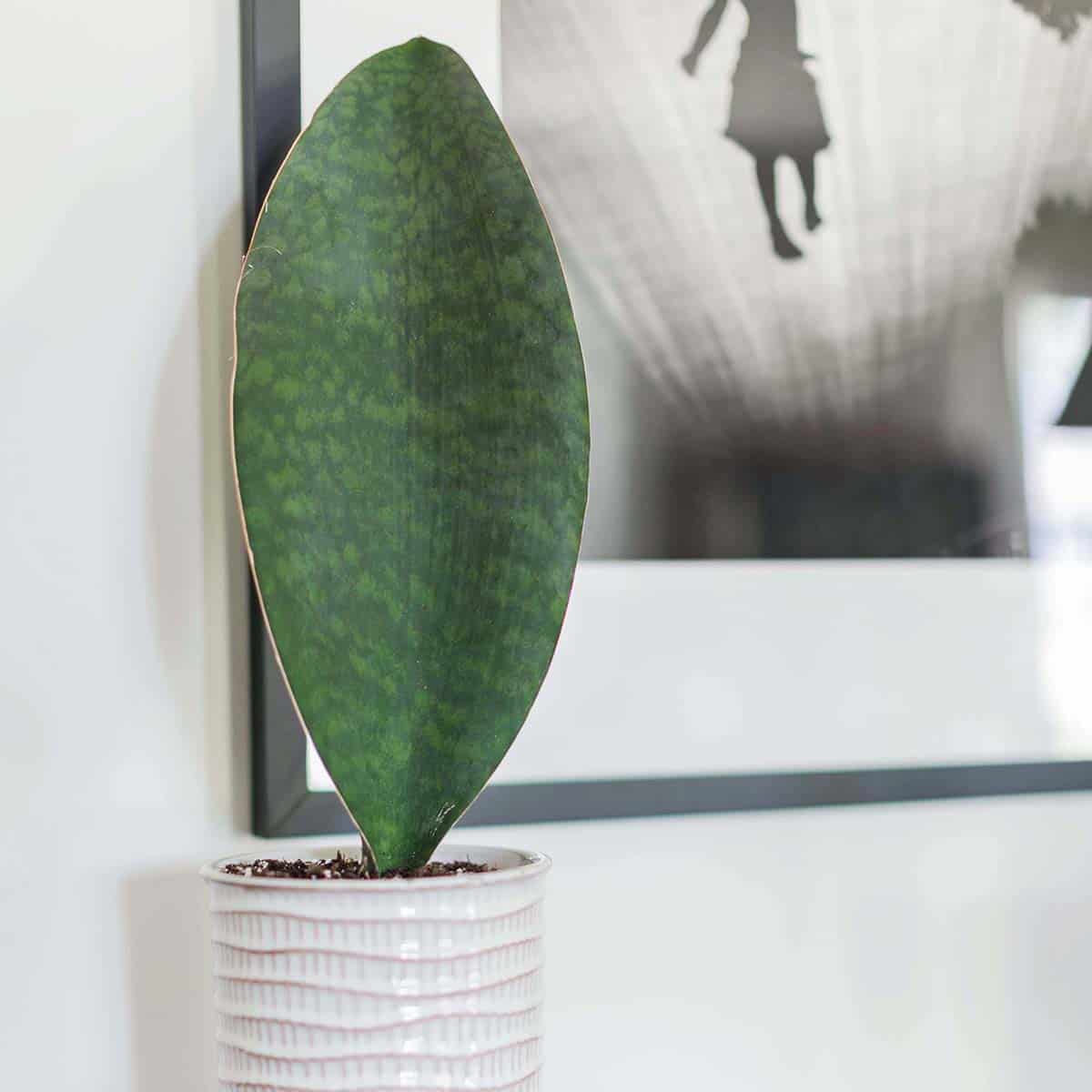Mother-in-law’s tongue, also known as snake plant or Sansevieria trifasciata, is a popular and hardy houseplant. This easy-to-care-for succulent can survive in a variety of conditions, making it perfect for beginners and experienced plant parents alike. In this comprehensive guide, we’ll cover everything you need to know about caring for mother-in-law’s tongue, from ideal lighting and watering to troubleshooting common issues.
Overview of Mother-In-Law’s Tongue
Native to tropical regions of Africa, mother-in-law’s tongue is characterized by its upright sword-shaped leaves that emerge from the soil in a rosette pattern. The leaves are typically a deep green color with light gray-green horizontal stripes and yellowish margins. In optimal conditions mother-in-law’s tongue can produce small white flowers near the base of the leaves, eventually resulting in orange berry-like fruits. However, it rarely flowers when grown as a houseplant.
This hardy succulent has a slow growth rate, usually growing about 1-3 feet tall indoors. With the proper care mother-in-law’s tongue can live for many years and reach heights of 5-6 feet tall. It’s an excellent air purifying plant and thrives on neglect, making it ideal for beginners or anyone looking for a low-maintenance houseplant.
Providing the Right Growing Conditions
Light
One of the best qualities of mother-in-law’s tongue is its ability to tolerate a wide range of light conditions. For best results, place your plant near an east or west facing window where it will receive plenty of bright, indirect light. Some morning or evening direct sun is beneficial but be sure to acclimate it slowly to avoid scorching the leaves.
Mother-in-law’s tongue will also do well in lower light environments. It can thrive in office settings or anywhere it receives artificial light. Rotate the plant periodically so all sides get adequate light exposure. Avoid overly dark spots as insufficient light can lead to leggy, weak growth over time.
Water
As a succulent, mother-in-law’s tongue prefers less frequent, thorough watering. Water only when the top 2-3 inches of soil are completely dry. Give the plant a good soak, allowing excess water to drain freely from the drainage holes at the bottom of the pot. After watering, dump out any water that collects in the saucer so the roots don’t sit in stagnant moisture.
The most common cause of death for this plant is overwatering, so err on the side of underwatering. It’s better to wait an extra few days until the soil is bone dry rather than water too frequently. The fleshy leaves and roots are prone to rot if kept consistently wet.
Temperature & Humidity
Mother-in-law’s tongue thrives in average room temperature between 65-80°F. Avoid placing it near hot and cold drafts from heating and cooling vents. The leaves can scorch if temperatures exceed 90°F. Cooler temperatures around 55°F can be tolerated at night.
This plant prefers low humidity environments, so there’s no need to mist or increase humidity artificially. Just provide good airflow and make sure the leaves dry out between waterings.
Soil
Use a well-draining potting mix, such as a cactus/succulent soil blend. You can also amend regular potting soil with perlite, pumice, or sand to improve drainage. Avoid dense, moisture-retentive soils that will keep the roots too wet. Re-pot every 2-3 years or whenever the roots have filled the container.
Caring for Your Mother-In-Law’s Tongue
Fertilizer
Feed monthly during spring and summer with a balanced liquid fertilizer diluted by half. Suspend fertilizing over the winter when growth slows down. As a light feeder, mother-in-law’s tongue doesn’t require much extra nutrition.
Pruning
Pruning is not necessary unless you want to control the size. You can trim off any dead or damaged leaves as needed. To keep the plant fuller, cut healthy leaves back to the base of the plant.
Propagation
Propagate new mother-in-law’s tongue plants from leaf cuttings or division. For leaf cuttings, remove a leaf and allow the cut end to callous over. Place the leaf in soil or water, making sure the end is partially buried. New plantlets will begin to grow at the base.
To divide, remove the entire plant from its pot and cut the root ball into sections using a sterilized knife. Re-plant each section in its own container.
Common Problems and Solutions
Drooping or wrinkled leaves
This is commonly caused by under-watering. Give the plant a good, thorough soak and leaves should perk up within a few days. Overwatering can also lead to drooping leaves as soggy roots struggle to take up moisture properly.
Yellow or brown leaf tips
Dry air or inconsistent watering may cause brown crispy tips. Increase humidity slightly or maintain a regular watering schedule. If it’s not related to humidity/watering, the issue could be due to improper lighting or over-fertilization. Move to a shadier spot or reduce fertilizer.
Mushy black leaves
This indicates root rot from overwatering. Stop watering and remove all affected leaves and roots. Repot the healthy parts of the plant in fresh, dry soil to give it a chance to recover. Water less frequently going forward.
Dry brown edges
Low humidity, dry soil, or sunburn can cause the leaf margins to dry out. Give the plant a deep watering and mist occasionally to increase moisture in the air. Move it out of direct sun if the brown edges appear scorched.
Insect pests
Mealybugs, spider mites, and scale insects may sometimes infest mother-in-law’s tongue. Isolate affected plants and use insecticidal soap, neem oil, or other organic pest treatments to remove the bugs. Be sure to get under the leaves where pests like to hide.
With its easygoing nature and tolerance of imperfect conditions, mother-in-law’s tongue is sure to be an enduring, low-maintenance addition to your indoor plant collection. Follow these care tips and you’ll be able to enjoy your snake plant for many years to come!

How Much Light Does a Snake Plant Need?
The wonderful thing about sansevieria is that it can handle diverse lighting situations. The plant will grow better in bright light (indirect light near a window in your home), but it can handle a darker corner in your home with less light exposure as well.
Low light is OK for the plant and it will be just fine in a room with low light. At my son’s school, there is an absolutely beautiful sansevieria in a room with no windows! The only light source is fluorescent light bulbs that are turned on during the day.
It’s amazing to see this plant thrive in what appears to be poor lighting conditions. It truly is an incredibly adaptable plant! I have sansiervieras all over my home and each one is in a different lighting situation. The ones near the windows will definitely grow faster, but the ones in low light are still happy (just a little smaller).
A rule of thumb when it comes to lighting: Just because they can live in some shade doesn’t mean that they will necessarily thrive in low light. They will definitely grow better in bright light.

I find the more I forget about my snake plant, the better! Only water when the soil is dry. I like to stick my finger in about 3-4 inches to check if the plant’s soil is completely dry. If there is a little moisture in the soil, then I will check it again in a week.
How your plant holds moisture will depend on where you live. If you live in a dryer climate, then it will dry out faster, or if you live in a humid climate, then it will hold water longer. One tip that I have found to be vital is that I do not water my succulents or plants that like to dry out on rainy days.
Watering on rainy days keeps my plants soggy and they take longer to dry out. Or, if there is rain in the forecast, I will wait to water until the rain is over. I water my sansevierias with more frequency in the growing season (which is spring to fall) so about every 2-3 weeks keeps them happy. In the fall-winter season, they only need a little water so I taper off and water about every 4 weeks.
When watering, my rule of thumb is to just water the first 6 inches below the soil line. I don’t soak my plants with water because overwatering can cause soggy soil and lead to root rot. I’d rather under water than over water them.
Sansevierias do not like their leaves to be wet, so when you water, just pour the water on the soil and try to avoid getting any water on the leaves. When new growth is coming in on sansevieria, little leaves form rosettes.
These rosettes do not like getting wet and especially don’t like water pooling in them. Too much water in the rosettes can be detrimental to your plant, so try to avoid that at all costs. Sansevierias like room temperature water.
If you are using tap/city water when you water, you can leave your tap water out in an open container for 24 hours so some of the chemicals evaporate. After 24 hours, the water is cleaner and healthier for our plant.
Fluoride and chlorine can build up in your sansevieria, so this method of leaving your water out will pay off in the long run. Using filtered water or collected rain water is a great option too!
These plants do well with the average humidity inside a house (between 30° and 50°) so you don’t usually have to do anything special to make them feel at home as far as humidity is concerned.

Dusting the leaves is a wonderful habit that your sansevieria will thank you for. I grab a slightly damp cloth (not too wet!) and wipe the leaves down on both sides. This will help the sun hit the plant and not block photosynthesis from taking place.
I turn my plant every time I water it. Turning your plant will promote even growth (especially if your plant is near a window). Another tip is to keep your windows nice and clean (on the inside and outside)! This can make a big difference with the amount of light getting to your plant. Squeaky clean windows will let in more light!
Propagating a sansevieria is a fun and wonderful process to watch. You can propagate in water or in soil. I personally love propagating in water because you can see the new root growth happening before your eyes.
If you’d like to propagate your sansevieria, simply cut off a leaf using a freshly washed tool. I find scissors are great! You can cut the leaf straight on the bottom or cut a “V” shape on the bottom. This “V” gives your plant more real estate to grow new roots.
Grab a glass vase or jar and stick your newly cut leaf in it. I like to sill my water about 4 inches above the bottom of my freshly cut leaf. Keep your plant in the water and watch little roots start to sprout!
Change the water and rinse the vessel anytime the water gets cloudy. I place my new cutting in front of a window so they can soak up lots of light. When the roots start to grow, you can leave the leaf in the water (I’ve left mine in water for months!) and it will do just fine.
When the roots have sufficient growth (1-2 inches is great), you can pot it in soil! Super easy!

If you want to propagate using the soil method, simply cut your plant (just like mentioned above) and stick your freshly cut plant into a pot with damp soil. As your plant begins to root (you can’t see it happening like the water method), you must make sure the soil doesn’t dry out too much.
As the roots make their way out and grow, they will need constant contact with the soil, so don’t let your plant dry out too much when you are trying to propagate. I’ll check on my freshly propagated leaves and give them more attention than usual.
If the soil has become bone dry, then I will give them a good soak in water. It is very satisfying when your new plant takes root and even begins growing new leaves!
Lastly, one of the best things about sansevieria is the variety of species! This plant has a diverse and beautiful plant family. The classic and most popular plant is the sword-shaped leaf that you see EVERYWHERE (like in this post).
Don’t be afraid to try new species because their care is very similar. Here are two different sansevieria I have in my home. It’s amazing how unique each one is!

How To Care For A Snake Plant | Mother In Laws Tongue Plant Care
FAQ
How often do you water mother in law’s tongue?
mother in law tongue needs 0.8 cups of water every 12 days when it doesn’t get direct sunlight and is potted in a 5.0″ pot. Use our water calculator to personalize watering recommendations to your environment or download Greg for more advanced recommendations for all of your plants.
How much light does a mother in law plant need?
Partial to full sun, dappled light, or a dark corner, its ideal situation is bright indirect light. While you can place them outside, be mindful that they can burn in the harsh sun. Water When it comes to watering your Mother In Law’s Tongue: less is more. This water-wise wonder prefers dry soil and is best left alone.
Is Mother-in-law’s tongue plant indoor or outdoor?
Position. While it doesn’t need a lot of light, which means it’s good for indoors, the Mother-in-Law’s Tongue can handle full sun and thrives outdoors. Make sure you keep it in a pot or secure space because it’s technically a weed and can soon take over.
